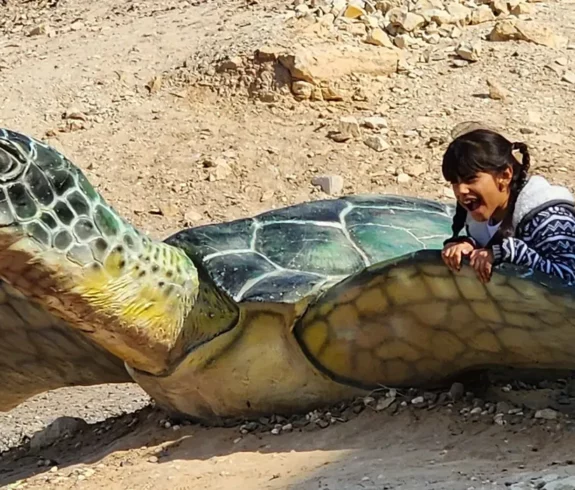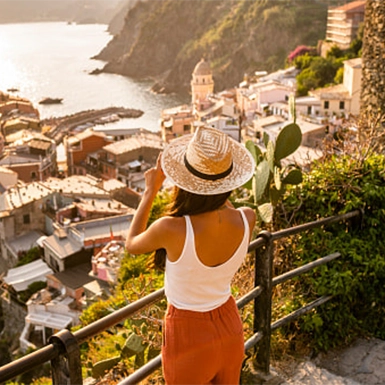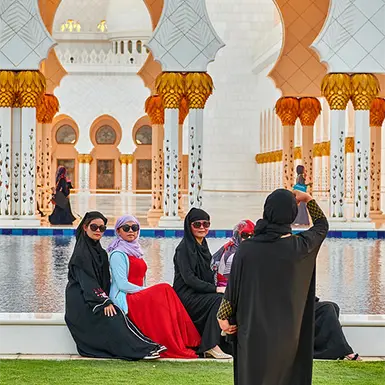On the peaceful eastern coast of Oman, Ras Al Jinz Reserve has established itself as an important conservation area. This reserve is not only a protected area but also an important center that aims to protect and improve the population of green sea turtles. Thus, Ras Al Jinz Reserve is important to the nesting and research of marine wildlife because it allows these spectacular creatures to come and rest.
Visitors can watch green sea turtles come ashore at Ras Al Jinz Reserve to lay their eggs in the soft sands in the late night hours. The reserve’s range is not limited to its own; it plays an important research center role, supplying data to many scientists and conservationists around the globe. Researchers use this data to assess the behavior, migrations, and health of sea turtles, integrating it into overall sea conservation efforts.
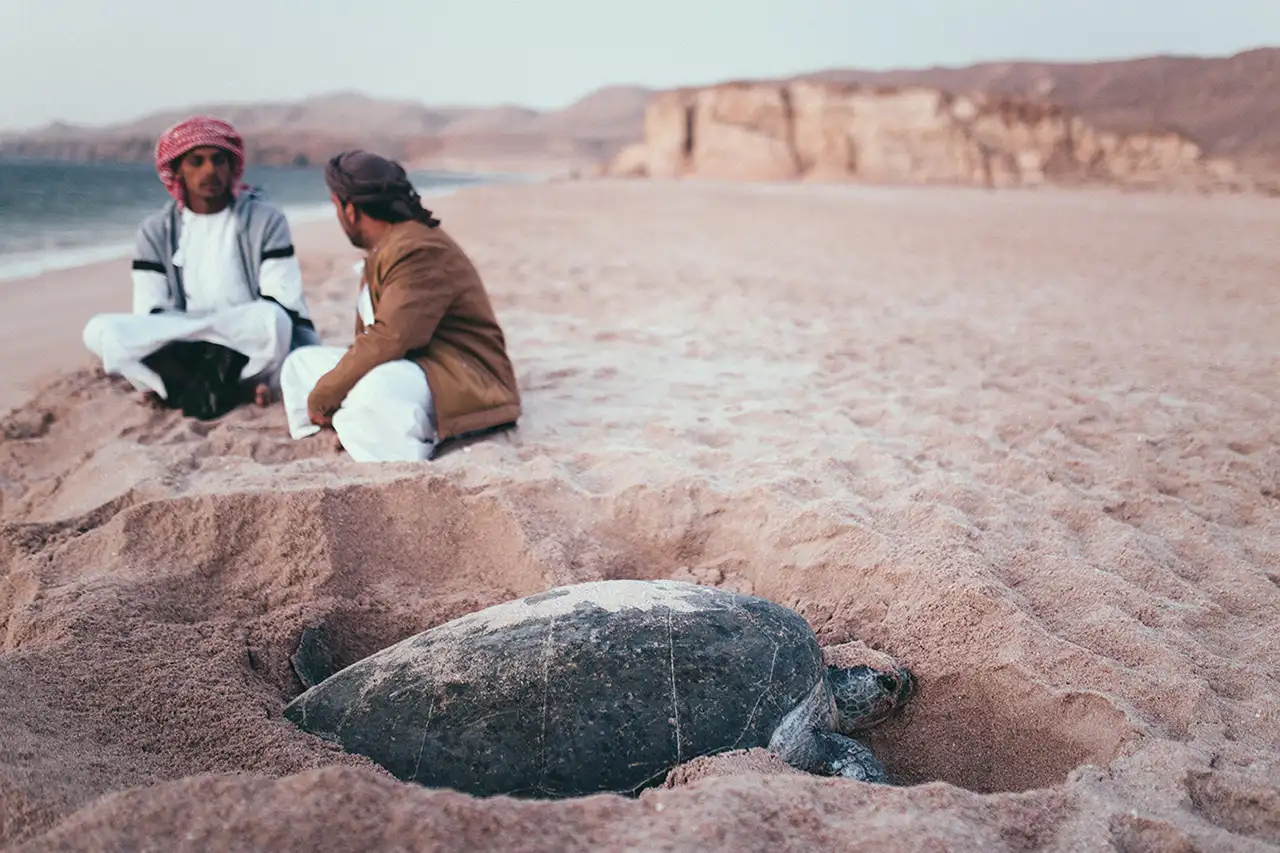
Location Highlights
- Geographical Position: They strategically placed Ras Al Jinz Reserve on Oman’s eastern coastline, opening directly to the Arabian Sea and providing unobstructed access for sea turtles.
- Proximity to Sur: The reserve sits near the ancient city of Sur, known for its rich maritime history and as a hub for traditional dhow shipbuilding. It adds to the area’s cultural significance.
- Accessibility: Easily accessible from the city, the reserve offers visitors a unique opportunity to witness turtle nesting and hatching events guided by experienced conservationists.
Turtle Conservation Efforts
Ras Al Jinz Reserve is a crucial sanctuary for endangered green sea turtles. Nestled on Oman’s eastern coastline, the reserve provides a haven for green turtles to nest in large numbers. Its significance lies in offering a protected environment where these endangered turtles can safely lay their eggs. With the turtles facing threats such as climate change, habitat loss, and human activities, the protection offered by Ras Al Jinz Reserve plays an essential role in preserving the green turtle population.
Conservation Programs
Ras Al Jinz Reserve runs several conservation programs to safeguard the turtles and their habitat. These efforts are crucial for keeping green sea turtles safe and ensuring their survival for future generations. The primary programs include:
- Monitoring and Research: The reserve closely monitors the turtle nesting process. Researchers gather valuable data on the number of nests, egg-laying patterns, and hatching success rates. This information helps experts develop better conservation strategies and understand turtle behavior more effectively.
- Nesting Site Protection: The reserve actively protects the beaches where turtles nest. Trained experts guide visitors, ensuring minimal disturbance to the turtles and their natural habitat during the nesting season.
- Awareness Campaigns: Ras Al Jinz Reserve runs educational campaigns to raise awareness about turtle conservation. These programs target locals and visitors, encouraging greater responsibility for protecting marine life.
Role in Marine Biodiversity
The Ras Al Jinz Reserve contributes significantly to preserving marine biodiversity. By protecting the nesting sites and surrounding coastal areas, the reserve ensures the survival of green sea turtles and other aquatic species. This effort helps maintain the balance of the broader marine ecosystem.
Turtle Nesting and Hatching Seasons
At Ras Al Jinz Reserve, you can witness the incredible tour of green sea turtles during their nesting and hatching seasons. Understanding these natural events helps you plan your visit for the best experience.
When to Visit: Nesting Season
Turtle nesting season occurs at Ras Al Jinz Reserve from May to September. These are the months when green sea turtles risk the rough tour and come to the shores to lay eggs on the pristine sandy beaches. The best period in the day to depict this behavior is usually late evening and early night when the turtles are by the nest.
The Nesting and Hatching Process
Knowing how turtles nest and hatch can enhance your visit. Here’s what happens:
- Nesting: Females usually leave the water at night. They come up to the beach, search for the location to nest, and do so by digging a hole in the sand. After depositing their eggs, the turtles replace the sand over the hole and leave the beach, heading back into the water.
- Egg Development: The eggs warm up in the sand for about two months. The sand temperature during this period determines the sex of the hatchlings.
- Hatching: In late summer, the hatchlings emerge from the nests. They navigate to the ocean, guided by the moonlight on the water. Watching this delicate process creates a memorable experience for visitors.
Guided Night Tours
Ras Al Jinz Reserve offers guided night tours, allowing tourists to see these events up close. During the tours, experienced guides lead groups along the beach, ensuring they do not disturb the turtles. Visitors learn about the life cycle of green sea turtles and the reserve’s conservation efforts.
- Expert Guidance: Guides explain turtle behavior and the importance of each nesting season.
- Respectful Viewing: Tours respect the turtles’ natural habitat, allowing unobtrusive observation.
- Memorable Experience: Watching turtles nest and hatch under the stars creates unforgettable memories for everyone.

Ecotourism at Ras Al Jinz Reserve
Ras Al Jinz Reserve leads the way in eco-friendly tourism, allowing visitors to enjoy nature while helping to protect it. The reserve adopts sustainable tourism practices that safeguard the environment and support local communities. By promoting responsible travel, Ras Al Jinz Reserve ensures that tourism benefits the green sea turtles and the surrounding ecosystem.
Promoting Eco-Friendly Tourism
Ras Al Jinz Reserve fosters eco-friendly tourism through several key initiatives:
- Sustainable Visitor Practices: The reserve teaches visitors how to reduce environmental impact. Simple actions like minimizing waste and following wildlife guidelines help preserve the natural balance.
- Eco-Friendly Accommodations: Nearby hotels and lodges use renewable energy and conserve water. These green practices align with Ras Al Jinz Reserve’s mission to protect the environment.
- Community Involvement: The reserve collaborates with local communities to support sustainable livelihoods. This collaboration ensures that tourism supports the local economy without harming nature.
Sustainable Practices for Minimal Environmental Impact
To keep tourism’s impact on the environment low, Ras Al Jinz Reserve implements various sustainable practices:
- Waste Management: The reserve enforces strict waste disposal and recycling systems. Visitors are encouraged to dispose of trash properly, keeping the beaches clean for turtles.
- Energy Conservation: Ras Al Jinz Reserve uses energy-efficient lighting and facilities. These measures help reduce the carbon footprint and preserve the natural surroundings.
- Habitat Protection: The reserve limits access to sensitive areas during nesting seasons. This restriction helps maintain the turtles’ natural habitat and ensures their safety.
Visitor Center and Turtle Museum
Ras Al Jinz Reserve features a modern visitor center and an engaging turtle museum:
- Visitor Center: The center offers valuable information about the reserve’s conservation efforts. Interactive displays educate visitors on turtle biology, behavior, and the importance of marine life protection.
- Turtle Museum: The museum presents exhibits on the life cycle of green sea turtles. Visitors can view artifacts, photographs, and detailed explanations of the turtles’ tour from hatchlings to adults.
- Educational Programs: Both the visitor center and the turtle museum offer educational programs for everyone. These activities help increase awareness and encourage guests to get involved in conservation efforts.
Guided Tours
Ras Al Jinz Reserve offers guided tours that enhance the visitor experience while supporting conservation:
- Expert Guides: Knowledgeable guides lead tours and share insights about the reserve’s ecosystem and turtle behavior. Their expertise enriches visitors’ learning experience.
- Night Tours: Visitors can join night tours to watch turtles nest and hatch. These guided tours ensure that the turtles remain undisturbed while allowing tourists to witness these natural events up close.
- Eco-Tours: The reserve provides eco-tours focused on sustainable practices and environmental education. These tours highlight the importance of preserving marine biodiversity and encourage responsible tourism.

Improving the Management of Visitors
Ras Al Jinz Reserve has a firm belief in sustainable and educational measures as means of creating a better experience for the visitors:
- Interactive Exhibits: The visitor center has interactive exhibits with marine conservation information to enhance visitors’ understanding.
- Photography Opportunities: They have set aside certain places to ensure people can take breathtaking pictures while keeping wildlife unaffected. This idea helps to keep the effects of tourism within controlled limits.
- Local Cuisine: Restaurants near the site provide sustainability-conscious organic food. Eating local dishes benefits the people and helps reduce tourism’s adverse environmental effects.
Visitor Experience at Ras Al Jinz Reserve
Visiting Ras Al Jinz Reserve offers a memorable mix of nature, education, and excitement. Whether you love wildlife or enjoy exploring new places, the reserve provides numerous activities and amenities to enhance your stay. Here’s what you can expect when you visit:
Tours and Activities
- Guided Tours: Join expert guides who lead you through the reserve’s central areas. Discover the habits of green sea turtles, their nesting routines, and the overall ecosystem.
- Night Tours: Watch turtles nest and hatch under the night sky. These tours let you see turtles in their natural environment without causing any disturbance.
- Daytime Walks: Stroll along the pristine beaches and observe various marine wildlife. Enjoy the peaceful setting and breathtaking views of the Arabian Sea.
Accommodations
- Eco-Friendly Lodges: Stay in comfortable lodges that blend seamlessly with nature. These accommodations use renewable energy and sustainable practices to reduce their environmental impact.
- Camping Sites: For those seeking adventure, choose from designated camping areas. Experience the soothing sounds of the ocean and the beauty of the night sky while staying close to nature.
Additional Activities
- Photography: The reserve offers numerous spots for photography enthusiasts to take stunning photos of turtles, beaches, and sunsets.
- Wildlife Watching: Beyond turtles spot various bird species and other marine life thriving in the reserve’s diverse habitats.
Educational Programs and Exhibitions
Ras Al Jinz Reserve focuses on education to deepen visitors’ understanding of turtle conservation. The visitor center and turtle museum play critical roles in this mission.
- Interactive Exhibits: Explore displays that explain the life cycle of green sea turtles. Learn about their behaviors, migration patterns, and challenges in the wild.
- Educational Workshops: Join workshops designed for all ages. These sessions cover marine biology, conservation techniques, and protecting marine ecosystems.
- Exhibitions: View fascinating displays featuring artifacts, photographs, and detailed explanations of turtle conservation efforts. These exhibitions offer insights into the reserve’s ongoing research and protection initiatives.
Visitor Rules for Protection
To protect the turtles and their habitat, Ras Al Jinz Reserve has set rules that all visitors must follow:
- Stay on Designated Paths: Walk only on marked trails to avoid disturbing the natural environment and the turtles’ nesting areas.
- No Littering: Everyone must dispose of all waste appropriately. Follow the provided bins and the beach cleaning procedure without exception to the reserve’s waste disposal rules.
- Limit Noise: They maintain the volume at a level that does not irritate the turtles. Do not talk or make other disturbing, unnecessary sounds during the tour or while walking.
- Respect Wildlife: Do not come close to or touch the turtles. It is okay to enjoy their beauty, but from a distance, e.g., when they are nesting, so as not to disturb them.
- Follow Guide Instructions: Comply with and obey the directions of your tour guides. They are there to protect you and the wildlife in the reserve.
- No Flash Photography: Use flash photography sparingly, as it can disturb the turtles, especially during nesting and hatching periods.
Improving Your Stay
Make the most out of your visit to Ras Al Jinz Reserve by following these recommendations:
- Schedule wisely: Anytime from May to September to see the turtles laying eggs and hatchlings. Look for the reserve’s timetable for informative tours and other activities.
- Dress for the occasion: Dress lightly and wear beach shoes, especially if walking over the sandy shores. However, carry a light coat for the evening outings.
- Pack Migrator Essentials: Bring water, sunscreen, and a hat. Otherwise, be ready for the scorching sun and seek shelter in the shade during midday activities.
- Talk to the Guides: Clarify your concerns, engage in the forum, and seize the opportunity to learn how to help with turtle conservation and what the reserve is doing to protect them.
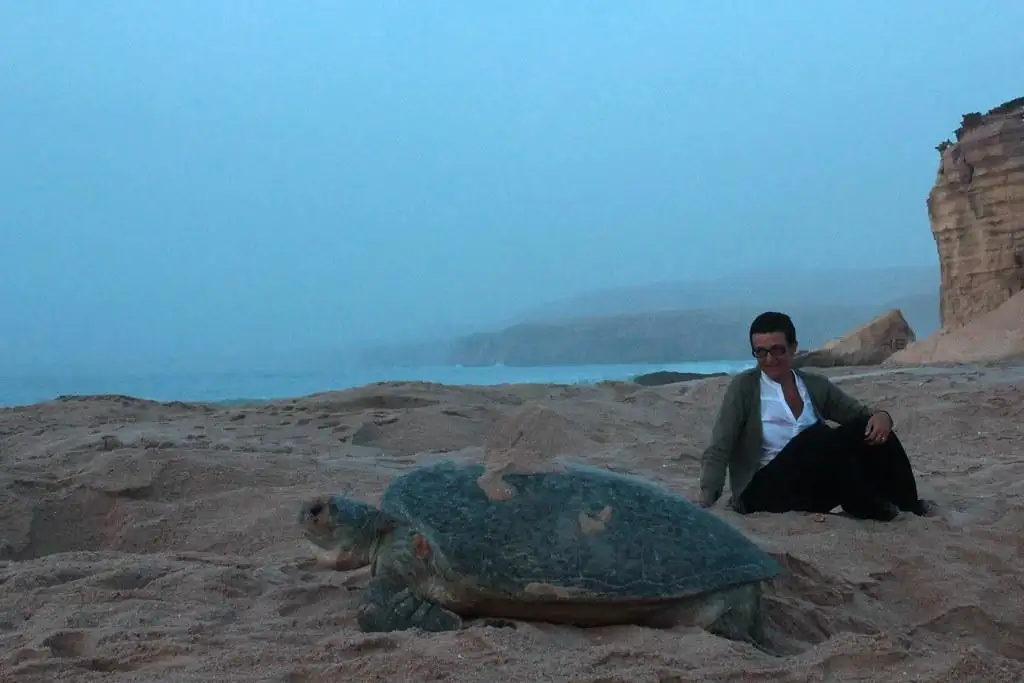
Wildlife and Biodiversity
Ras Al Jinz Reserve is a sanctuary for green sea turtles and a haven for diverse wildlife. Visitors can witness various species thriving in the coastal ecosystem, creating a unique experience. The reserve supports a rich biodiversity that extends far beyond the turtles, offering glimpses of other marine life and bird species that make this area their home.
Other Wildlife
Green sea turtles may be the main attraction at Ras Al Jinz Reserve, but visitors can also observe various other wildlife.
- Migratory Birds: The reserve’s coastal habitat attracts many migratory birds yearly. Visitors may spot species such as herons, ospreys, and sandpipers along the shoreline. Birdwatchers will find this a perfect location to observe these birds in their natural environment.
- Dolphins: Offshore, you may be lucky to see dolphins swimming in the Arabian Sea. These intelligent creatures often pass by the coast, adding to the magical experience of visiting the reserve.
- Other Marine Life: The waters around Ras Al Jinz are home to various marine species, including colorful fish and coral reefs. While the primary focus is turtle conservation, the rich aquatic biodiversity supports the ecosystem’s overall health.
Coastal Ecosystem
The Ras Al Jinz Reserve is within a unique coastal ecosystem supporting the region’s biodiversity. The interaction between the sandy beaches, coastal waters, and the surrounding environment creates a thriving habitat for marine life and wildlife.
- Turtle Nesting Grounds: The sandy beaches provide the perfect environment for green sea turtles to lay their eggs. The balance of temperature and coastal protection ensures the successful hatching of turtles each season.
- Coastal Waters: The warm, nutrient-rich waters of the Arabian Sea help sustain various marine species. Fish, crabs, and other sea creatures thrive here, forming part of the food chain supporting aquatic life and birds in the region.
- Vegetation and Land Wildlife: Beyond the coastline, the surrounding desert and vegetation host smaller land-based species contributing to biodiversity. This interplay between land and sea makes Ras Al Jinz a key area for environmental conservation.
Accommodation Options
Visitors to Ras Al Jinz Reserve can choose from eco-friendly accommodations that enhance their stay while promoting sustainable tourism. The reserve offers comfortable lodgings that blend seamlessly with the natural surroundings, allowing guests to enjoy their visit while reducing their environmental impact.
Ras Al Jinz Turtle Reserve Hotel
The Ras Al Jinz Turtle Reserve Hotel is the primary accommodation within the reserve, designed to offer guests a unique and sustainable stay:
- Eco-Friendly Practices: The hotel complies with the environment, especially regarding energy usage and reducing waste and effluents. This approach minimizes disturbances to the region’s natural environment while enhancing visitors’ comfort and experience.
- Proximity to Turtle Nesting Sites: Hotel guests can easily access the turtle nesting areas of the reserve. At night, briefings and turtle-watching tours are available for those who want to see turtles in their habitat, the ocean.
- Modern Amenities: Reasonable as it may seem, the hotel, despite being eco-friendly, manages to accommodate its visitors by providing air-conditioned rooms, space for feeding, and spectacular views of the Arabian Sea.
Nearby Hotels and Guesthouses
Many other hotels nearby offer ease and comfort for tourists who wish to continue their stay or explore the rest of the area.
- Sur Plaza Hotel: This contemporary hotel is a few minutes’ drive from Sur. It strikes a delicate balance of modern facilities with traditional Omani hospitality. It is ideal for trips to Ras Al Jinz and its surrounding coastal city.
- Al Ayjah Plaza Hotel: This delightful bed and breakfast is on the seaside and offers picturesque harbor views. It is a suitable and inexpensive place for those who want to visit Ras Al Jinz Reserve but also want to interact with the local people.
How to Get to Ras Al Jinz Reserve
Accessing Ras Al Jinz Reserve while enhancing one’s traveling experience is effortless. Several means of transport are available for visitors to the reserve from the primary cities in Oman. When traveling from Muscat or Sur, one will enjoy the beautiful scenery along Oman’s eastern coast before heading to the unforgettable experience at the wildlife reserves.
Best Routes from Major Cities
- From Muscat: Driving from Muscat to Ras Al Jinz Reserve covers approximately 230 kilometers. The most scenic and convenient route is via Route 17, which offers beautiful coastal views. The drive usually takes three to four hours, depending on traffic and stops.
- From Sur: If you’re traveling from Sur, Ras Al Jinz Reserve is just 50 kilometers away. The short drive along the coast takes about an hour and offers both convenience and great views.
Transportation Options
- Car Rentals: Renting a car is one of the easiest ways to reach Ras Al Jinz Reserve. Car rental agencies in both Muscat and Sur offer a variety of vehicles suited for long-distance travel. Driving yourself allows flexibility to stop and explore attractions like Wadi Shab or Ras Al Hadd along the way.
- Guided Tours: Many tour operators in Muscat and Sur provide guided tours to Ras Al Jinz Reserve for visitors who prefer no driving. These tours typically include transportation, allowing visitors to enjoy the scenic drive while learning about Oman’s culture and nature from experienced guides.
- Private Transfers: One more alternate travel arrangement is to consider booking a private transfer from Muscat or Sur. This fantastic, stress-free travel option allows you to avoid the worries of driving yourself.
Nearby Attractions Around Ras Al Jinz Reserve
Beyond its incredible turtle experiences, several beautiful attractions surround Ras Al Jinz Reserve. Visitors can discover nearby coastal towns, natural wonders, and cultural landmarks, enriching the trip.
1. Sur
The coastal city of Sur is a short drive from Ras Al Jinz Reserve and offers a wealth of history. Known for its traditional dhow shipyards, Sur allows visitors to witness artisans building these iconic boats by hand. The city’s harbor, lighthouse, and historical sites provide a deeper look into Oman’s maritime heritage.
Things to Do in Sur: Explore the Sur Maritime Museum, stroll along the corniche, and visit the old dhow shipyards. You can also enjoy a meal at one of the local seafood restaurants along the coast.

2. Wadi Shab
For nature lovers, a visit to Wadi Shab is a must. Located halfway between Muscat and Ras Al Jinz, this stunning valley offers a picturesque hiking trail to natural pools and waterfalls. After a short boat ride across the entrance to the wadi, visitors can hike through the canyon, swim in the crystal-clear water, and explore the hidden caves.
What to Expect at Wadi Shab: Wear comfortable hiking shoes and bring swimwear for the pools. The hike takes about 45 minutes, and the refreshing swim is worth the effort.
3. Ras Al Hadd
Just a short distance from Ras Al Jinz Reserve, Ras Al Hadd offers another peaceful coastal retreat. This area is also known for its beaches and as a significant nesting site for green sea turtles. Ras Al Hadd provides a serene escape with stunning Arabian Sea views.
Things to Do at Ras Al Hadd: Spend time on the beach, take a coastal walk, or visit the Ras Al Hadd Fort to learn about the region’s history. During turtle season, you may even witness turtles nesting on the shore.
Tips for Visiting
When planning a visit to Ras Al Jinz Reserve, a few practical considerations will help ensure a comfortable and eco-friendly experience. Whether visiting to see the turtles or enjoying the beauty of Oman’s coastline, these tips will help you make the most of your trip.
Practical Tips for Visitors
- What to Wear: Wear lighter, more comfortable clothes that fit the desert environment. Daytime casuals should include betraying fabrics such as cotton and essentials like hats and sun shades to ward off direct sunlight. A light jacket keeps you comfortable during the more relaxed evening tours. Proper shoes for walking on sandy beaches, such as marine boots, are also vital.
- Best Time to Visit: The prime time to visit Ras Al Jinz Reserve is between May and September, during the turtle nesting and hatching seasons. The best chance to see turtles is in the evening or at night, and early mornings are ideal for cooler temperatures and wildlife photography.
- Follow the Guidelines: To protect the turtles and the environment, follow the reserve’s guidelines. Remain in marked areas. Flash photography is prohibited, and do not approach the turtles any closer than allowed. The guides will give important information; therefore, pay attention to them for a good and responsible time.
- Book in Advance: Ras Al Jinz Reserve is famous for turtle watching, so visitors should book their hotels and tours early, especially during the mating season.
- Bring Essentials: Remember to pack enough water, sunblock with the highest factor, and mosquito repellents. Because the area is far from civilization, such supplies are necessary.
Cultural and Environmental Importance
Ras Al Jinz Reserve holds significant cultural and environmental value, contributing to Oman’s heritage and global conservation efforts. Its purpose extends beyond tourism, making a meaningful impact on preserving endangered species and Oman’s natural and cultural heritage.
Cultural Significance of Turtles in Omani Traditions
Turtles have been a symbol of longevity and resilience in Omani culture for centuries. Coastal communities have long respected the turtles for their role in maintaining the marine ecosystem, which supports local livelihoods. Historically, spotting a sea turtle was considered a good omen, and their presence indicated a healthy aquatic environment.
Today, protecting turtles at Ras Al Jinz Reserve continues to honor these cultural beliefs. Visitors experience not only a rare natural event but also gain an appreciation for Oman’s long-standing respect for marine life and conservation.
Environmental Importance
Ras Al Jinz Reserve is a critical site for turtle conservation, playing a significant role in global efforts to protect endangered species. As one of the most important nesting grounds for green sea turtles, the reserve offers a safe space for these turtles to nest, while its research initiatives help scientists better understand and protect these creatures.
- Global Conservation Efforts: The Ras Al Jinz Reserve research supports international conservation efforts by tracking green sea turtles’ migration, behavior, and reproductive cycles. The findings help inform global strategies for protecting marine ecosystems.
- Preserving Biodiversity: Besides turtles, the reserve protects various species, including birds, fish, and other marine life that rely on the coastal ecosystem. This diverse habitat helps maintain local and global biodiversity.
- Educational Initiatives: The reserve educates visitors by offering guided tours, exhibitions, and workshops explaining why marine conservation matters. These programs help everyone understand the importance of protecting our oceans and wildlife.
